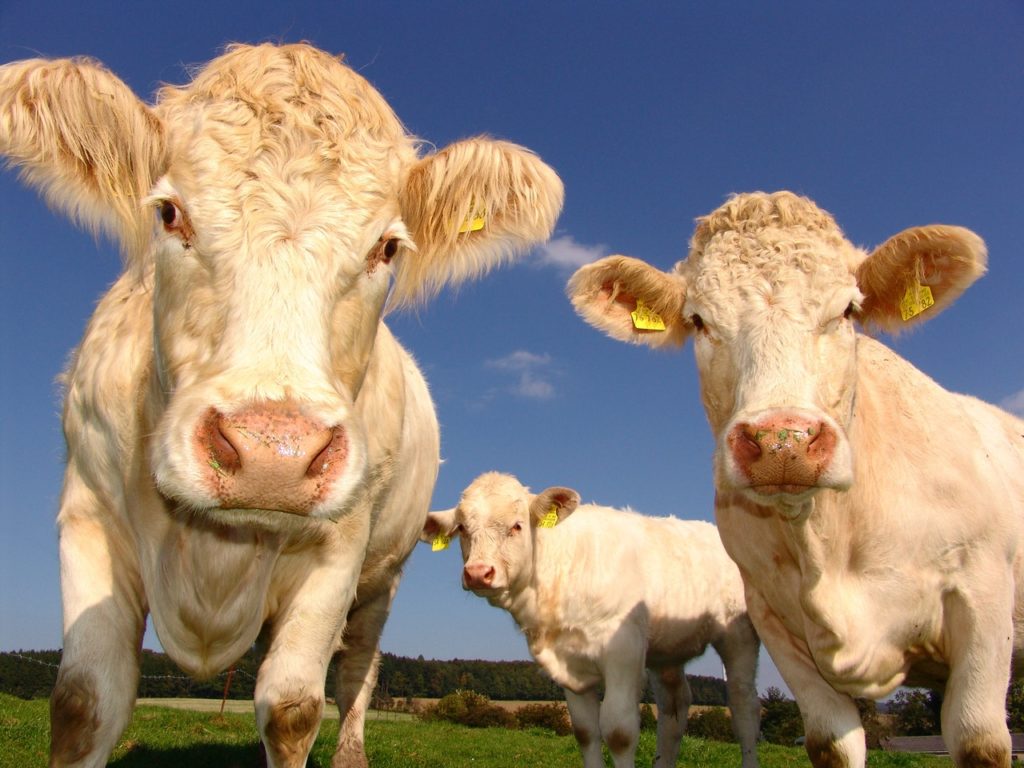Originally posted in Food Science Fusion.
By Abbey Thiel
Move over oat-milk, Silk, and Almond Breeze, there’s yet another variety of the traditional white beverage making its debut.
Squeezed in between the ever-growing number of plant and animal-based milks you’ll find a new type of cow’s milk, known as A2 milk, making its way into the refrigerated section of American grocery stores. Although A2 milk has been widely available in Australia, New Zealand, and the UK for years, it’s still relatively new to the United States.
Although “A2” could easily be mistaken for a brand name, the designation actually refers to the presence of a protein named A2 beta-casein, instead of the alternative version, A1 beta-casein, although both are naturally found in milk. You’ll notice A2 milk cartons will boost claims like “easier to digest” or “helps avoid discomfort.” That’s because the A1 version has recently been implicated with digestive issues resembling the symptoms of lactose intolerance.
In conventional cow’s milk, proteins are divided into two major groups, casein and whey proteins. Caseins make up the majority of the protein content, usually around 80%, and can be found in several variations including alpha, beta, and gamma caseins. What’s of importance in A2 milk, as mentioned above, is the specific type of beta-casein present.
Beta-casein has two genetic variations, A1 and A2, which differ only by a single amino acid. For much of history, cows only produced the A2 version of beta-casein, however, a point mutation occurred about 5,000 years ago somewhere in Europe [1]. That is, a single amino acid in beta-casein was mutated from proline to histidine.
With this small change in genetics, cows went from previously producing only A2 beta-casein, to producing either A1 beta-casein, A2 beta-casein, or a combination of both. Although this is only a small tweak in genetics, it ultimately affects how well we’re able to digest milk.
When we drink milk, we have digestive enzymes in our gut that can cleave A1 beta-casein, but not A2. The problem is, when A1 beta-casein is cleaved, it frees a small peptide called beta-casomorphin-7 (BCM-7). The word peptide just refers to a part of a protein that has been clipped off. For example, the peptide BCM-7 is only 7 amino acids long, whereas the protein A1 beta-casein is 209 amino acids in total [2].

By Pixabay // Pexels.com
Even though BCM-7 is tiny, it’s very active within our body. This peptide is known to interact with our gastrointestinal tract, internal organs, and brainstem [3]. It’s been implicated as the cause for a slew of problems related to gastrointestinal distress, and for being difficult for a large part of the population to digest.
In the past, lactose intolerance has been to blame when dairy products have caused gastrointestinal issues. Now, it’s becoming increasingly accepted that A1 beta-casein may actually be producing some of these symptoms through the production of BCM-7, or at least exacerbating the problem [4].
Only a handful of human studies have been completed, but the results have cited A1 beta-casein with higher instances of immune responses, significantly greater amounts of inflammation, longer gastrointestinal transit times, abdominal pain, and high stool consistency [1,4]. Such outcomes support the A2 milk industry in their goal to exclude A1 beta-casein from milk production, although more research, especially with larger numbers of participants, should be carried out to solidify these conclusions.
It was not through some great technological advancement that A2 milk has been made possible, but through selective breeding, a technique utilized since ancient times. By continuously breeding European cows that expressed the A2 beta-casein gene, instead of the A1 version, offspring that only produce A2 beta-casein have been created.
If selective breeding is done enough times, herds of A2 only cows can be established, which would yield A2 only milk. Interestingly, cows from Africa and Asia never underwent this point mutation. Their milk has always contained only A2 beta-casein, so these herds have also been utilized to produce A2 milk.

By Engin Akyurt // Pexels.com
About two decades ago, the A2 Milk Company, headquartered in New Zealand, started this selective breeding process. The company now has full herds of cattle that produce 100% A2 beta-casein milk. Currently, the business has enough supply to export its A2 milk to Australia, China, the U.K., and the U.S.
By taking advantage of natural genetic variation in cattle via selective breeding, milk producers have created a new beverage dubbed A2 milk. While conventional milk contains both A1 and A2 beta-casein, the former is absent in A2 milk, modifying the ratio of proteins in the product.
New research on the digestibility of milk has linked A1 beta-casein to the discomfort many people experience when consuming milk products like gastrointestinal dysfunction, inflammation, and longer GI transit times. Further research should be carried out to solidify the effects of A1 and A2 beta-casein during digestion.
Although conventional milk has long been part of the human diet, in recent years there’s been a surge of unique products with their own health claims. Fairlife milk uses an ultrafiltration process to increase the protein content while simultaneously reducing the amount of sugar. Sources of milk have expanded to include the liquid from nuts and seeds. A2 milk has followed in these footsteps by utilizing breeding techniques to alter protein concentrations in milk.
With the advancement of breeding methods and creation of new technologies, the conventional milk market has seen rapid expansion, and will likely continue to do so. Milk products are expected to continue to be tailored to appeal to specific groups of consumers, to remove certain allergenic compounds, or improve the content of trendy nutrients. The once dull beverage seems to be re-energized, revamped, and ready to attract new consumers.
Sources:
1. Ho, S., Woodford, K., Kukuljan, S., and Pal, S. “Comparative Effects of A1 versus A2 Beta-casein on Gastrointestinal Measures: A Blinded Randomised Cross-over Pilot Study.” European Journal of Clinical Nutrition 68.9 (2014): 994–1000.
2. Brooke-Taylor, Simon, Karen Dwyer, Keith Woodford, and Natalya Kost. “Systematic Review of the Gastrointestinal Effects of A1 Compared with A2 β-Casein.” Advances in Nutrition 8.5 (2017): 739–48.
3. Behera, Rajalaxmi & Sahu, Adhikari & Mandal, Ajoy & Rai, Saroj & Karunakaran, Muthu & Dutta, Tapas. (2018). A1 versus A2 Milk- Impact on Human Health. International Journal of Livestock Research. 1. 10.5455/ijlr.20170810113426.
4. Jianqin, Sun, Xu Leiming, Xia Lu, Gregory W. Yelland, Jiayi Ni, and Andrew J. Clarke. “Effects of Milk Containing Only A2 Beta Casein versus Milk Containing Both A1 and A2 Beta Casein Proteins on Gastrointestinal Physiology, Symptoms of Discomfort, and Cognitive Behavior of People with Self-reported Intolerance to Traditional Cows’ Milk.” Nutrition Journal 15.1 (2016): 35.

Abbey Thiel | Linkedin
Abbey discovered that food science was a real major while attending University of Wisconsin-Madison, and quickly transferred into the department. After graduating with a B.S. in food science, she decided to stay in Madison to pursue her PhD. Her research explores the fat network found within ice cream, and yes, there’s lots of ice cream parties! If not found sitting at a microscope for extended amounts of time, Abbey enjoys the great Midwestern sport of log rolling (Google it) and laughing really loud. She is also very busy passing on her passion for food science to her two-year-old niece, whose favorite color is bacon and has hopes of growing up to be soup.






useful information thanks.